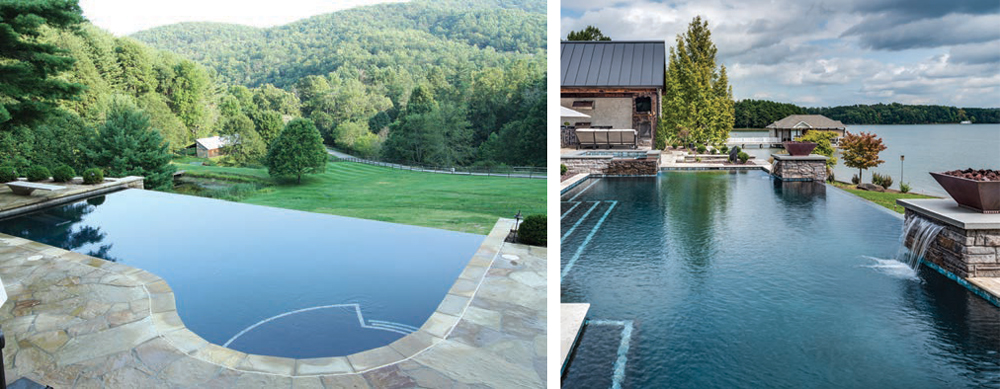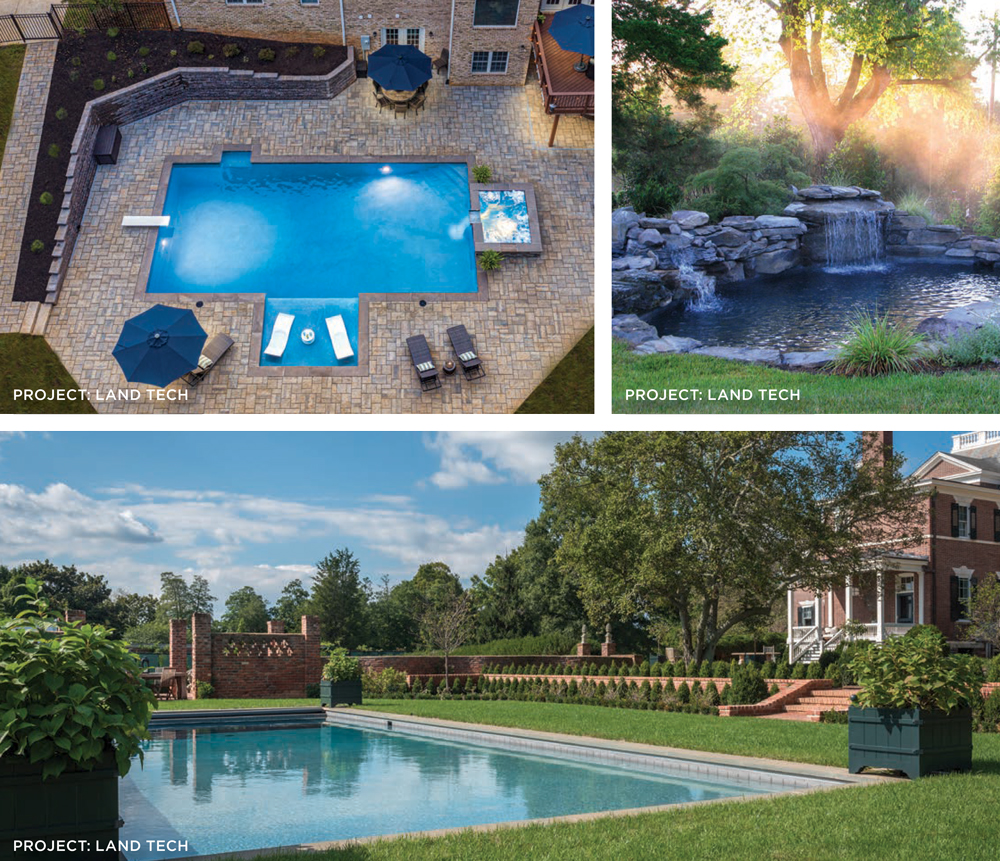Stay Cool | With Your Own Pool
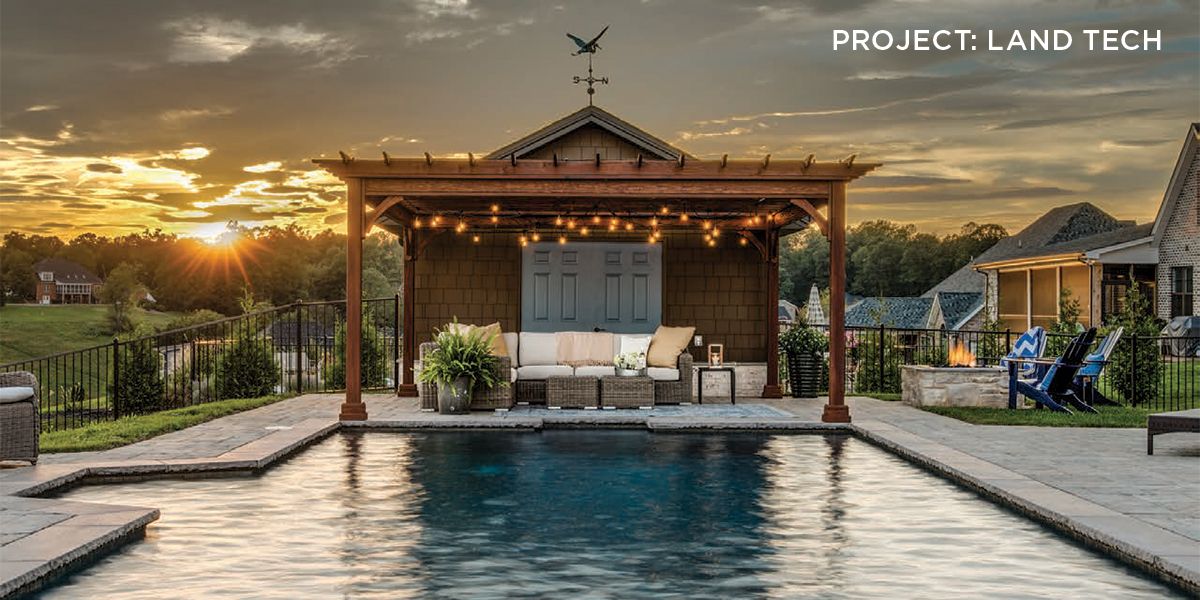
PLAN FOR A POOL THAT FITS YOUR FAMILY AND BUDGET
When the hot days hit, it’s heavenly to have a backyard oasis—a spot to take a dip, catch some sun, swim some laps or cannonball into the deep end. Pools today have more available features than ever before, to suit a variety of budgets and lifestyles. If you’re considering adding one to your property, some careful thought about how you’ll use it now and in the future will ensure that your pool functions well for your family for years to come.
“The pandemic has created a situation where a lot of people are spending money at home, on their home,” says Wayne Melancon of Land Tech, a pool and landscaping company in Lynchburg. “Staycation backyard projects are the thing right now.”
Jason Vaughan, vice president of sales and new construction for National Pools in Roanoke, says his company has had the same uptick in requests. “COVID has created a backlog we have never seen in 43 years in business,” he says. “We are running on close to a year-long backlog, when typically the process from initial consultation takes a couple of months, and most pool projects take around three to four months to complete once construction has started.”
While COVID-19 has upped the demand for pools and backyard recreation areas, the appeal of a pool extends beyond the current era of social distancing. Read on for advice on what to consider, and how to plan for your own pool installation.
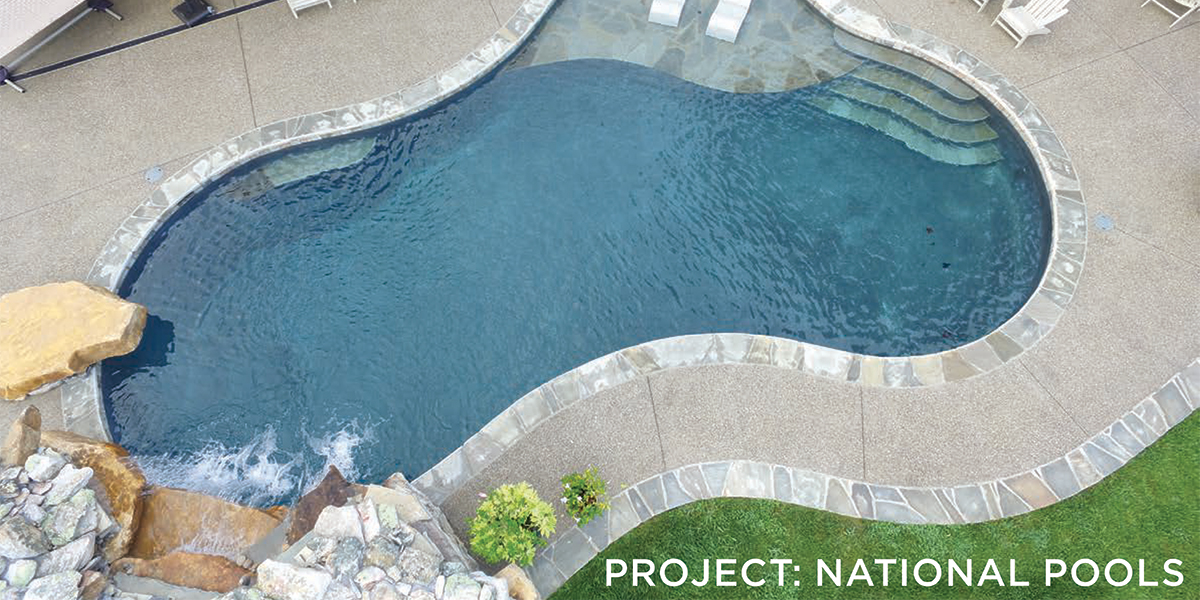 What’s your budget?
What’s your budget?
In-ground pools are an expensive endeavor, any way you cut it. According to Homeguide.com, the average cost of a pool is $35,000, with most people paying between $28,000 and $55,000, depending on the type of pool and degree of customization. A larger concrete pool can cost $60,000 or more, and that cost often does not include related expenses, such as landscaping, hardscaping, fencing and pool accessories, like covers and automatic pool cleaners.
There can also be additional site-specific costs. “If access to the property is limited, or the site is very sloped, it can increase the budget dramatically,” says Vaughan. “There have been very few sites that we’ve seen where a pool cannot be built; it’s just a question of whether the budget will allow it if things like retaining walls have to be constructed.”
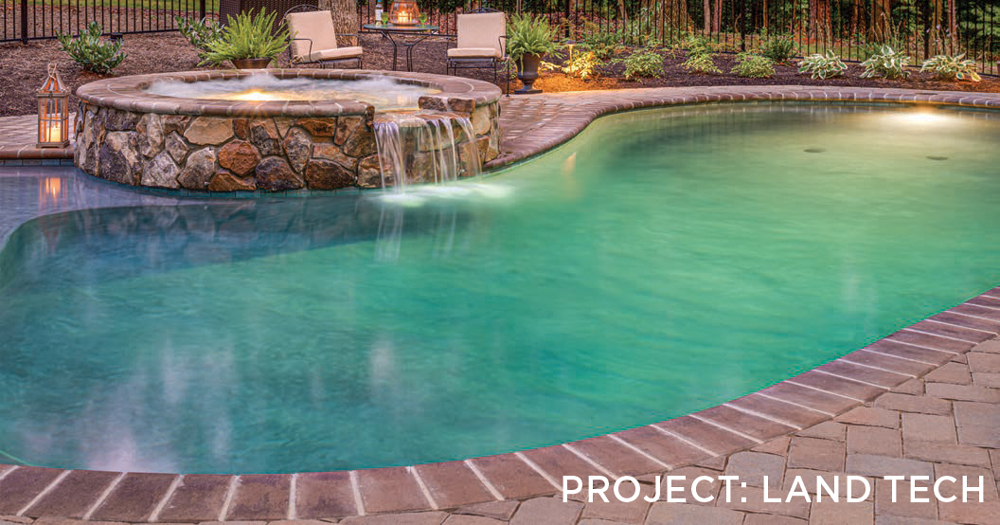 As for obtaining a design for your pool, you have two options: Hire an architect to create your pool and have a pool company execute the vision, or hire a design/build pool company to do both. Typically, the design/build route will save on your budget, as design cost is included in the price, but an architect will incur a separate fee. However, both an architect and pool company will likely provide a free on-site visit to discuss your property and the feasibility of your pool dreams.
As for obtaining a design for your pool, you have two options: Hire an architect to create your pool and have a pool company execute the vision, or hire a design/build pool company to do both. Typically, the design/build route will save on your budget, as design cost is included in the price, but an architect will incur a separate fee. However, both an architect and pool company will likely provide a free on-site visit to discuss your property and the feasibility of your pool dreams.
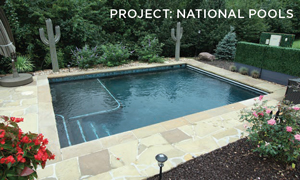 Types of in-ground pools
Types of in-ground pools
There are three main types of in-ground pools: vinyl-lined, fiberglass and concrete/gunite. Typically, vinyl-lined are the least expensive to install, followed by fiberglass, and then concrete/gunite. A vinyl pool has a custom-made sheet of vinyl between the water and the pool structure, and this liner must be replaced every six to 12 years. Heat, weather changes, and how well you care for the pool will impact the longevity; plan about $4,000 for a new liner. However, a vinyl pool is not as porous as the plaster finish on a concrete pool, which means vinyl-lined pools use less chemicals, and therefore your chemical costs may be lower by approximately 25 percent.
A fiberglass pool has a higher initial cost than a vinyl-lined pool, but won’t incur the maintenance costs of a new liner down the road. Fiberglass pools are a one-piece shell constructed offsite. They cannot be customized, which is a drawback, but are available in many shapes and sizes. The material is durable and non-porous, and the look of a fiberglass pool has come a long way since the initial models decades ago—which critics said resembled oversized bathtubs. Colored finishes, spas, water features and other options are now available for fiberglass pools.
The traditional high-end pool is a concrete/gunite pool. Gunite is pneumatically applied concrete, which means it is pumped through a hose at high velocity, creating a material that is stronger than traditional cast-in-place concrete. Gunite has been used in swimming pool construction for more than 40 years, and is the only type of pool that both Land Tech and National Pools install. “It’s the best product on the market from a longevity standpoint,” Melancon says. “If you go back in history and look at the pools of the Egyptians, they were concrete.”
A concrete pool is constructed by pouring concrete over steel rods to create the shell of the pool, which is then finished with other materials, such as plaster. A concrete pool is fully customizable in shape and size to fit your property. A concrete pool requires more maintenance than fiberglass, but can last 50 years or more with proper care, including cleaning and attention to chemical maintenance. A concrete pool will need to be resurfaced approximately 10 to 15 years after installation, which can cost $10,000 or more, depending on pool size. Typically, tile at the water line is replaced during this process as well.
You may have to consult with several pool companies to explore the options, as many specialize in only one type of pool and may not be able to give you a balanced assessment of each.
Features to consider
If you live in Florida or Texas, you may not need a pool heater, but in Virginia, most pool owners want to invest in one in order to enjoy a longer pool season, notes Melancon. “Homeowners are asking for more options now than they once did, like automation for lights and such, robotic cleaning and salt chlorination,” Melancon says. Like many things in your home, such as lighting and security systems, some pool features like lights and waterfalls can be app-controlled via a phone or tablet.
 Think carefully about how you’ll use your pool. Do you have young children who want to cannonball off a diving board? Is a slide a must have? What about space for a basketball goal, volleyball net or room to swim laps? If a diving board is on your list, you’ll need a pool with a diving well, approximately 8 feet deep. This can increase the cost of the pool construction, and it’s wise to check with your homeowner’s insurance first, as there can be a fee increase for a diving board. “We’re about 50/50 on the pools we install … some people are fine with a more shallow pool and find that you can use more of the pool that way, and others that are more old-school and want the diving board,” Melancon says.
Think carefully about how you’ll use your pool. Do you have young children who want to cannonball off a diving board? Is a slide a must have? What about space for a basketball goal, volleyball net or room to swim laps? If a diving board is on your list, you’ll need a pool with a diving well, approximately 8 feet deep. This can increase the cost of the pool construction, and it’s wise to check with your homeowner’s insurance first, as there can be a fee increase for a diving board. “We’re about 50/50 on the pools we install … some people are fine with a more shallow pool and find that you can use more of the pool that way, and others that are more old-school and want the diving board,” Melancon says.
 A sun shelf or tanning ledge is a popular pool feature now, which allows for chairs to sit in the pool, and many homeowners want to incorporate seating areas, like benches, within the pool for relaxing instead of active swimming. “A sun shelf or tanning ledge we probably incorporate in 75 percent of the pools we build now,” says Vaughan. “In addition to putting chairs there, young kids or babies can play in that shallow space.”
A sun shelf or tanning ledge is a popular pool feature now, which allows for chairs to sit in the pool, and many homeowners want to incorporate seating areas, like benches, within the pool for relaxing instead of active swimming. “A sun shelf or tanning ledge we probably incorporate in 75 percent of the pools we build now,” says Vaughan. “In addition to putting chairs there, young kids or babies can play in that shallow space.”
Last year Melancon did a beach entry (also called a zero-depth entry pool) for a homeowner with a disability, so he could roll his wheelchair right to the pool. This feature would also be a plus for an older homeowner, or following a surgery. A zerodepth entry also creates a beach-like area for young children to play. If you don’t have young children anymore, will you have grandchildren in the future?
Think about how you’ll use the pool now, but also in 10 years, or 15 years. The options are limitless, if the budget allows. Waterfalls, lights, attached or separate spas, and hardscape areas can create the custom look you desire.
Rules and permits
If you select a reputable pool company or architect, they will know how to navigate the permitting process in your county and area. Melancon says that in Central Virginia, inspectors and municipalities have been easy to work with, but there are certain restrictions to follow. For example, in Bedford you must stay 20 feet off of any septic tank. There’s also a state code regarding a safety barrier around the pool, which is usually a fence. In some instances, a power safety cover is sufficient, but it depends on the locality. Again, your pool contractor can give you the most updated guidance regarding your area.
In addition, you’ll need to check with your homeowner’s association for any additional stipulations, as well as your homeowner’s insurance carrier, to prevent any last minute surprises.
When making such a large investment in your property, you’ll want to think ahead to consider your budget, available options, and desires. Also be aware that pools don’t recoup most of the cost in resale, and whether or not it’s a desirable home feature depends on the buyer. Some are thrilled about a pool while others will bypass the property because of it. Most homeowners who invest in one are doing it for personal enjoyment and family fun; the real value is in the memories made around the pool deck. ✦
concrete/gunite pool, fiberglass pool, In-ground pools, lighting, pool, pool heater, robotic cleaning, salt chlorination, security systems, sun shelf, tanning ledge, vinyl-lined, zero-depth entry pool
